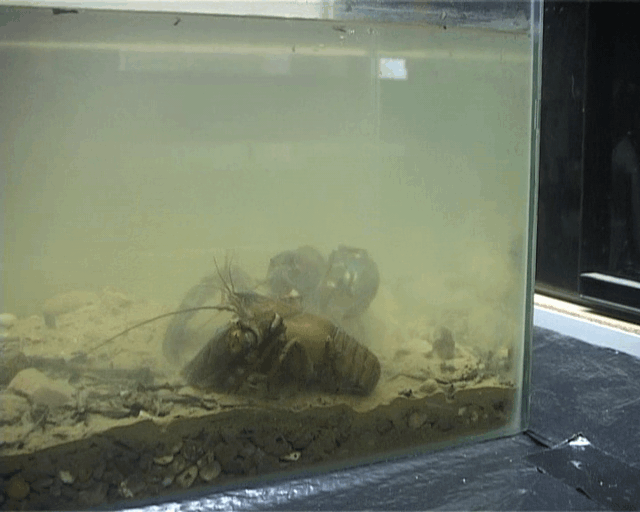BES Festival of Ecology 2020
Date:
The British Ecological Society’s Festival of Ecology 2020 was the first conference I presented at as a PhD student. Due to the COVID-19 pandemic, the conference was held online. The poster I presented provides an outline of my proposed research, splitting my methods into three key components.
Below are the details of the poster I presented, including the videos to which I linked on the poster.
Predicting Sediment Transport Dynamics in Rivers Infested with Invasive Signal Crayfish (Pacifastacus leniusculus)
Charlotte E. Vinera, Matthew F. Johnsona and Nicholas Doddb
Presented at the British Ecological Society Festival of Ecology, 14-18 December 2020



References
Barry, J.J., Buffington, J.M. and King, J.G. 2004. A general power equation for predicting bed load transport rates in gravel bed rivers. Water Resources Research. 40, W10401, doi: 10.1029/2004WR003190.
Albertson, L.K., Sklar, L.S., Pontau, P., Dow, M. and Cardinale, B.J. 2014. A mechanistic model linking insect (Hydropsychidae) silk nets to incipient sediment motion in gravel-bedded streams. Journal of Geophysical Research: Earth Surface. 119: 1833-1852, doi: 10.1002/2013JF003024.
Juras, M., Albertson, L.K., Cahoon, J. and Johnson, E. 2018. Incorporating macroinvertebrate biological structures into gravel-bedded stream fluid dynamics using 3D CFD modelling. Ecological Engineering. 119: 19-28, doi: 10.1016/j.ecoleng.2018.05.011.
Skulovich, O., Cofalla, C., Ganal, C., Schüttrumpf, H. and Ostfeld, A. 2017. Modelling of resuspension due to fish activity: Mathematical modeling and annular flume experiments. International Journal of Sediment Research. 32: 421-431, doi: 10.1016/j.ijsrc.2017.07.003.
Harvey, G.L., Moorhouse, T.P., Clifford, N.J., Henshaw, A.J., Johnson, M.F., Macdonald, D.W., Reid, I. and Rice, S.P. 2011. Evaluating the role of invasive aquatic species as drivers of fine sediment-related river management problems: The case of the signal crayfish (Pacifastacus leniusculus). Progress in Physical Geography: Earth and Environment. 35(4): 517-533, doi: 10.1177/0309133311409092.
Guan, R.-Z. 1994. Burrowing behaviour of signal crayfish, Pacifastacus leniusculus (Dana), in the River Great Ouse, England. Freshwater Forum. 4: 155-168.
Johnson, M.F., Rice, S.P. and Reid, I. 2011. Increase in coarse sediment transport associated with disturbance of gravel river beds by signal crayfish (Pacifastacus leniusculus). Earth Surface Processes and Landforms. 36: 1680-1692, doi: 10.1002/esp.2192.
Rice, S.P., Johnson, M.F., Extence, C., Reeds, J. and Longstaff, H. 2014. Diel patterns of suspended sediment flux and the zoogeomorphic agency of invasive crayfish. Cuadernos de Investigación Geográfica. 40(1): 7-27, doi: 10.18172/cig.2508.
USACE Hydrologic Engineering Center. 2019. Hydrologic Engineering Center-River Analysis System. [Software]. [Accessed 12 February 2020]. Available from: https://www.hec.usace.army.mil/software/hec-ras/.
aSchool of Geography, University of Nottingham
bDepartment of Civil Engineering, University of Nottingham
Image Credit: Matthew F. Johnson

